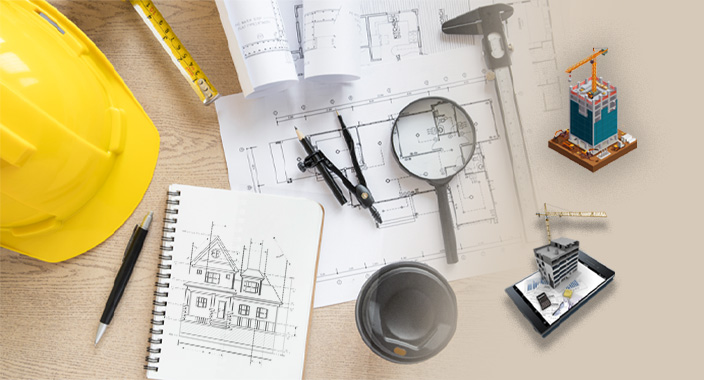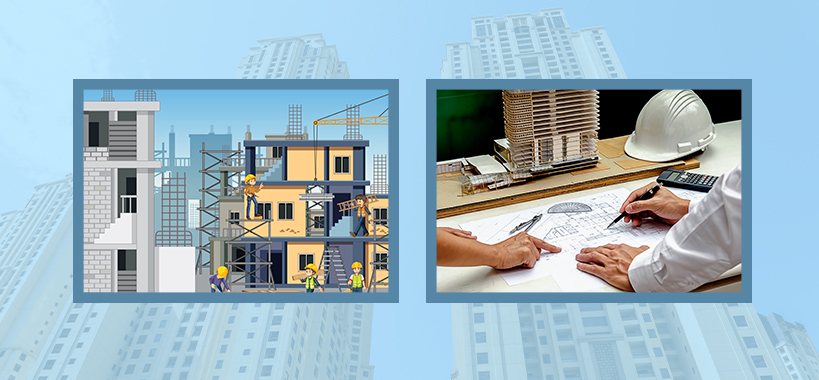The structural design of a high-rise building has a significant part in deciding its safety and longevity. It ensures that a high-rise building can withstand natural disasters like earthquakes, wind, and fire. The structural design of a building must handle lateral pressure and seismic stresses due to earthquakes and vertical loads due to the building’s weight.
The information that the structural design of a building provides are foundations, walls, floors, roof types, steep beams, material quality, and more. An in-depth analysis of the building structure informs about the load and wind speed sustained by the building. It also provides the overall utility and capability of the building in various environmental conditions.
Best Structural Design Practices for High-Rise Buildings
The performance of a high-rise building gets determined by preliminary design by working on multifaceted structural form and outline. A high-rise building consists of many structural elements and demands more accurate analytical methods to measure structural stiffness and static and dynamic structural behavior.
Here are a few best structural design practices suggested for high-rise buildings.
Lateral Resistance in High-Rise Buildings

The design process of high-rise buildings must consider lateral loads due to earthquakes and wind. The lateral displacement should get controlled for the safety and comfort of occupants and to eliminate secondary structural impacts. Application of various structural systems like rigid frames, braced frames, shear-walled frames, frame-tube, braced-tube, bundled-tube, and outrigger systems helps improve the lateral resistance of buildings.
By considering wind engineering, buildings can control lateral and torsional movements. The Swiss Re building in London has included wind load as a performance-based strategy to enhance its performance.
Building Height and Footprint
A high-rise project should consider height and footprint while designing. And site planning of a high-rise project must consider project location, size, topography, structural needs, and other variables that affect its height. The projected height should be able to transfer gravity loads effectively. And the footprint planning should maximize space usage and allow natural light and airflow. The building structure design should adhere to respective zone and construction laws.
Building’s Façade System
A building’s façade system should consider energy efficiency, sturdiness, and aesthetic appeal. Facade systems provide thermal and acoustic insulation, water resistance, resistance to wind and fire, and interior natural lightning for a building.
Structural Stability
A stable structure undergoes small deformations or shape changes due to loading. It removes the internal forces produced by load action, returning the building structure to its original shape. The structural designer should propose a building structure design with stable configurations. A few methods that help in structural stability are steel plate shear walls, strip model, and steel bracing model.
Estimation of Seismic Behavior of Buildings

Improved pushover analysis methods help estimate the seismic behavior of high-rise buildings. Some of these are- modal pushover analysis, incremental response spectrum analysis, upper-bound pushover analysis, adaptive modal combination, and extended methods.
The consecutive modal pushover (CMP) procedure is preferable even for single and multi-stage pushover non static analysis.
The CMP has been found effective for estimating the seismic requirements of a tall building, especially plastic hinge rotation. The multi-stage pushover analysis controls seismic responses on the middle and top floors of high-rise buildings, whereas single-stage pushover analysis can control lower floors.
Fire-Safety
Fire safety is a crucial factor to get considered while designing a building. A building’s structural elements and materials should be fire-resistant, and the design plan must include several exists for safely departing the occupants during a fire. Buildings require trustworthy fire detection and suppression system to deal with such mishappening.
Skytree Consulting as a Structural Engineering Service Provider
Skytree consulting is an experienced architectural, structural, and BIM service provider catering to various industries. The structural engineering services by Skytree help deliver a strong, sustainable, and structurally sound design to withstand several vertical, lateral, and horizontal loads due to environmental pressure and gravity. The structural engineers and designers at Skytree adhere to several global standards to meet a structural design that meets innovation and sustainability.